What is Thareed?
Thareed (or Tharid) is a Middle Eastern dish consisting of red meat chunks with vegetables and thick sauce from tomatoes and tomato paste, cooked slowly, and served over pita bread or flatbread. The term literally means “stewed beef with vegetables over bread.”
Origin of Thareed
The dish can be traced back to the Arabian culture – specifically in Jeddah, Saudi Arabia. Thareed is also cooked and served in North Africa and is known as “trid” and even in Xinjiang where it is known as “terit.”
Considered an Arab national dish, it is, according to legend, known to have been the Islamic prophet Muhammad‘s favorite dish.
Ingredients of Thareed
Yes, meat, vegetables, tomato sauce, and tomato paste, your favorite middle eastern spices and flatbread
Thareed is usually with meat and whatever choice of fresh vegetables you already have, like carrots, potatoes, zucchini, okra, pumpkin, gourd, etc., even parsnips, and your favorite Middle Eastern spice mix. Cups of water are also an important ingredient in tharid as it should create some broth to accommodate the pita that would be its based when served. This dish is also called thareed laham.
Tomato sauce and tomato paste will provide thickness to the broth to finally create a delicious sauce.
My first experience with thareed is from the book “The Complete Middle East Cookbook” by an Australian food writer. It was also from which I had taken most of the Middle Eastern recipes I had successfully cooked as a wife to Mr. Green Eyes. The book featured thareed, and I confidently cooked it one day in Ramadan, but my husband’s remark was “where are the other vegetables?” My brows raised, my heart a bit broken, I meekly responded that my favorite book said potatoes, nothing else. This dish, I would come to realize is a family favorite, and yes, it does accommodate any choice of vegetables (than just potatoes) that one can think of. Eggplants? Yes. Bell peppers? Yes!
Here is the line-up of ingredients for thareed:
- Red meat, cut for stewing. I say red meat, because it can be either lamb or beef. I believe, the Arabians love it with lamb. I have always been careful when I ask for cuts in the local market because we all differ in our preferences. I use 2–3-inch cubes for this dish, while my sister-in-law prefers them double that size. Overwhelming for me, but she is so good at making them fork-soft that I get the bite-size chunks in a single poke!
- Sweet vegetables. The lineup of sweet vegetables: potatoes, pumpkins, sweet potatoes, zucchini, red bell peppers, and carrots. Any of these or a combination of them will give thareed the little sweetness it needs, and a bit of starch to add to the thickness of the sauce.
- Green vegetables.Green beans, gourd, green bell pepper. Further to greens are parsley and coriander.
- Another must (for me) in cooking thareed is eggplant. It has to be there! It provides the wow effect in the bite. There are two ways to add eggplants to thareed: 1) throw in the pot along with other vegetables and let it soften to one grade over the usual, but still intact; 2) fry in oil or pan-grill them and then include them in the pot at serving time, before sprinkling the dish with chopped parsley.
- The spices. Arabic spice blend, black lemon, ground black pepper, cardamom, cinnamon and cloves.
How to Serve Thareed
Thareed is a popular dish during the month of Ramadan as a main meal after the soup at the break of fast on any day of fasting. The absence of rice and the abundance of meat pieces provide more protein and fewer carbohydrates, therefore, this dish does not make you sluggish after that break-of-fast meal. For the same reason, this is a healthy dish.
By practice, thareed is served on top of Arabic (or pita) bread called khobz (or khobuz or khobiz) that are roughly torn to 2-inch pieces. Give it 3-4 minutes for the bread to absorb the sauce, then the dish is ready as a delightful meal.
Thareed is versatile, it goes well with plain rice as well.
Enjoy this more with an accompaniment of either green salad with Greek dressing or tabbouleh.
Cooking Tips
- Use ghee instead of any cooking oil. If you are overwhelmed with the richness of ghee, you can mix 1 tbsp ghee with 2 tbsp of cooking oil and you are good to go.
- Any Arabic spice blend is good for this dish. You can even create your own. Sometimes, I feel that the secret of the entire dish is from the Arabic spices.
- Tamarind. Another pointer I got from hubby is the inclusion of tamarind pulp in the sauce. Tamarind pulp is a sticky sweet-and-sour brown flesh from the ripened produce of the tamarind tree. They are sold in local markets and groceries in compacted form, then they are dissolved in water to make the pulp which are then used in recipes and drinks. The addition of the tamarind pulp to thareed optimizes the sour and sweet taste of the sauce that comes from its vegetable ingredients.
- Fry onion, rather than just sautee, i.e., lightly brown the onion during the initial steps of cooking for a more defined taste. The use of garlic is optional (my mother-in-law does not use it) as it adds aroma to the dish as well.
- Black lemon or lime juice. Juice of one fresh lime is good, there is no doubt about it; however, I suggest you try black lemon powder with your thareed for that distinct Middle Eastern taste. Black lemons (they look more like black lime) are also available in powder form.
- Garnish with minced fresh coriander or parsley for a more delightful taste.
Storing Left-Over Thareed
Left-over thareed, as long as it is not yet mixed with the bread, can be stored in an airtight container in the fridge for a week, or in the freezer for about a month. Thaw, reheat, and serve with new and fresh pita or flatbread.
Print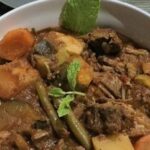
Thareed – A Middle Eastern Dish
- Prep Time: 30 minutes
- Cook Time: 2 hours
- Total Time: 2 hours 30 minutes
- Yield: 6 1x
Description
Beef chunks and a lot of vegetables in rich tomatoes, tomato paste and mixed spices, cooked slowly, and served over flatbread.
Ingredients
- 1 kg boneless stewing lamb (or beef, cut into cubes)
- 3 medium-sized onions (chopped roughly)
- 2 tbsp ghee
- 2 tsps baharat (mixed spices)
- 4 cloves garlic (minced)
- 2 cups chopped peeled tomatoes
- 1 30-ml pack tomato paste
- 2 cinnamon sticks
- 5–6 green cardamoms
- 6 cloves
- salt and pepper to taste
- 1/4 cup chopped parsley, divided
- 2 medium-sized potatoes (or sweet potatoes, quartered)
- 1 medium-sized zucchini (cut up)
- 1 cup pumpkin or carrots (cut into 2-inch squares)
- 2 medium-sized eggplants (quartered and soaked in water for 20 minutes)
- 1 cup water
Instructions
- Sautee garlic in ghee and store for less than a minute, just until they are golden, then add the onions and cook while stirring until they are limp and golden brown in color – about 5-7 minutes
- Add baharat and cook stirring for another minute. Love the aroma of the mixed spice at this stage.
- Add meat cubes, and cook stirring until all the red juices come out.
- Add tomatoes, salt and pepper, chopped parsley (leaving a little for garnishing later), cinnamon sticks, cardamoms, cloves, and water. Add black lemon as well, if using.
- Cook covered over medium heat until the meat is tender (about 1-1/2 hours).
- Add the vegetables and tomato paste and continue to simmer till they are soft – an additional 20-30 minutes.
- Place thareed over torn Arabic bread or steamed white rice and garnish with chopped parsley.

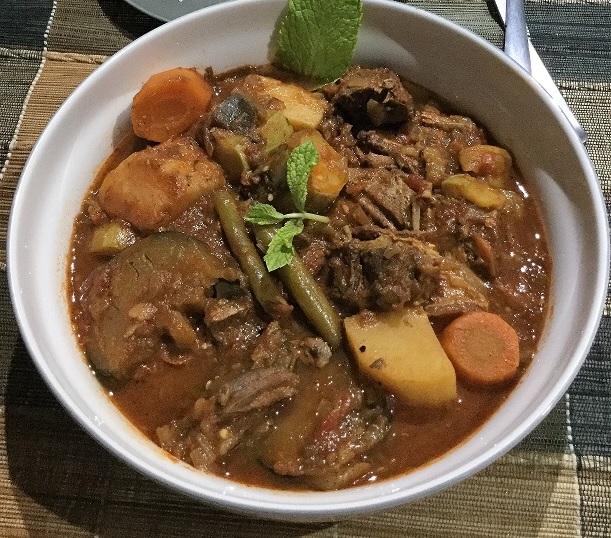
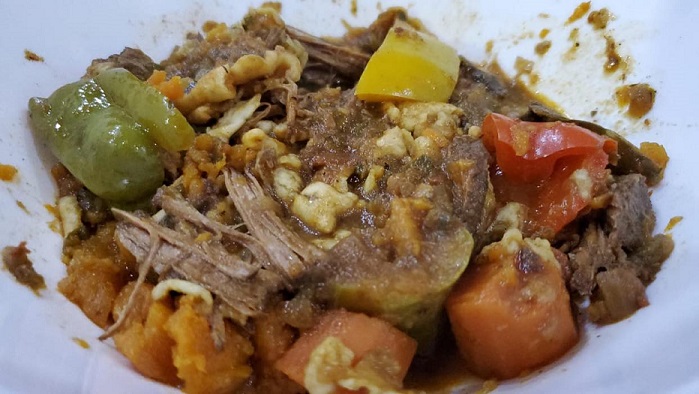

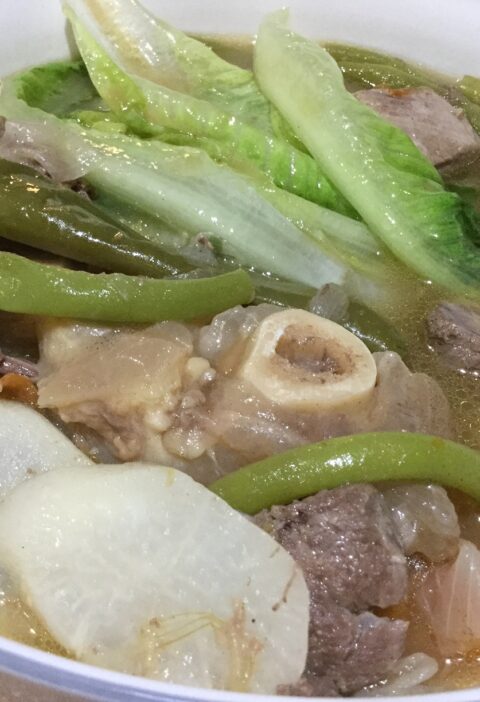
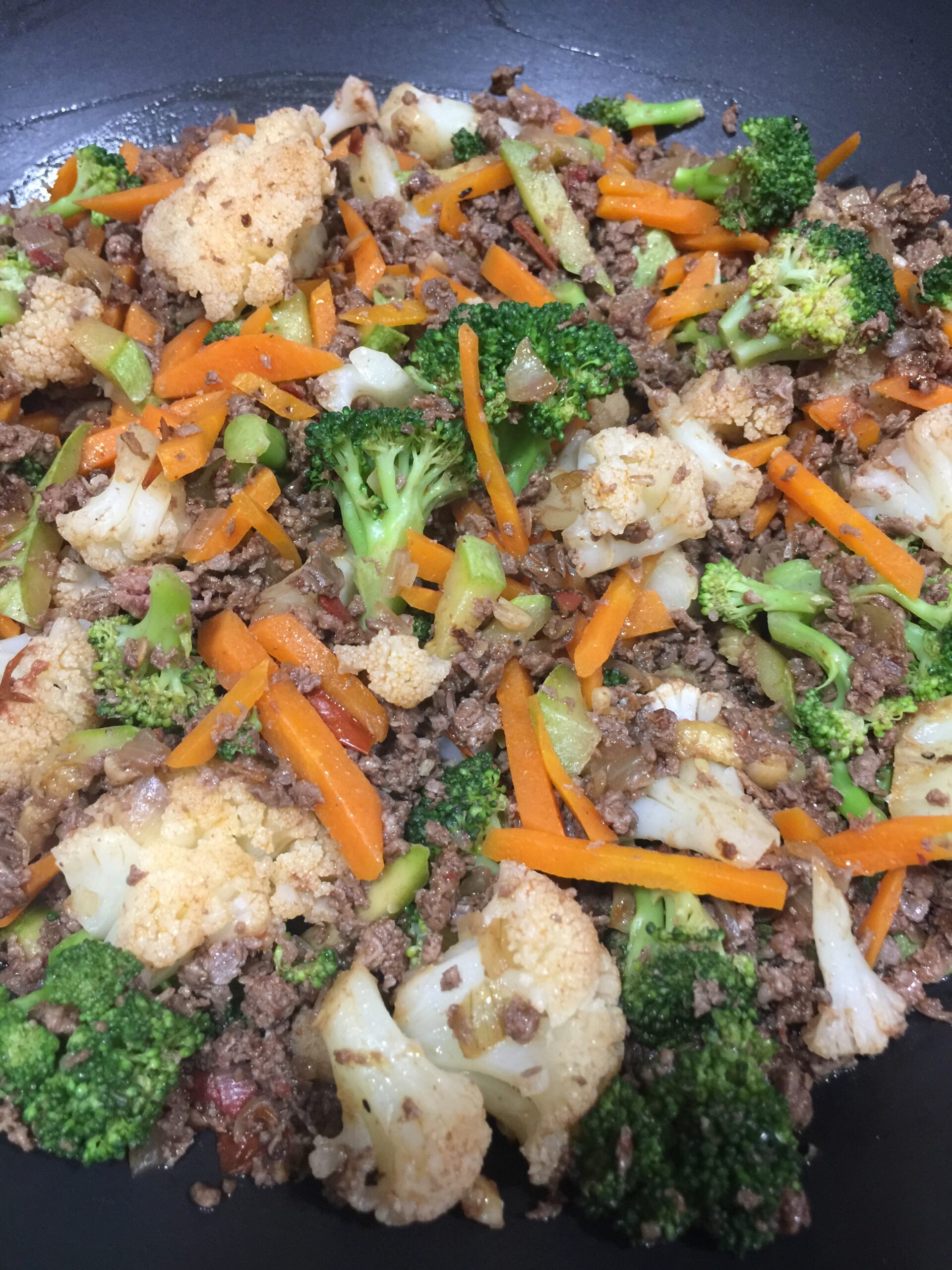
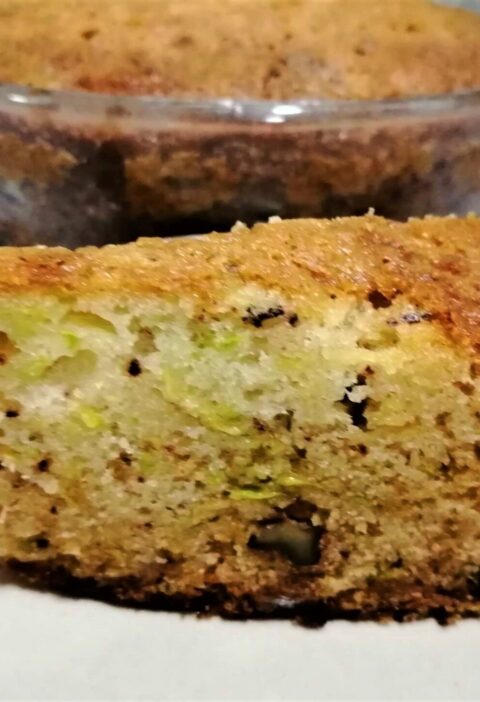
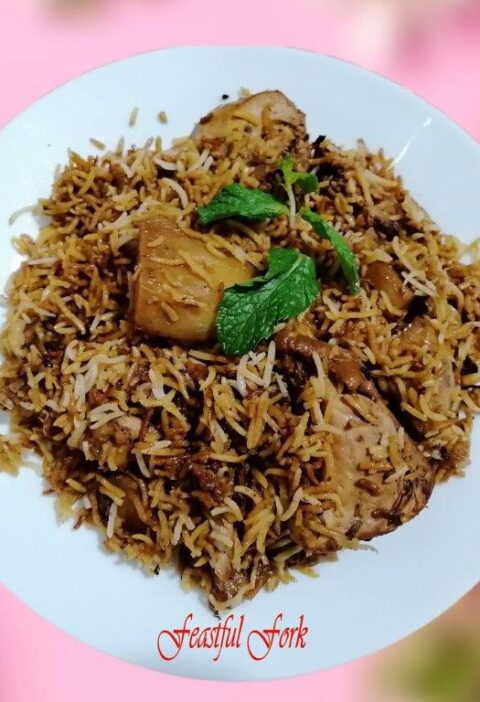
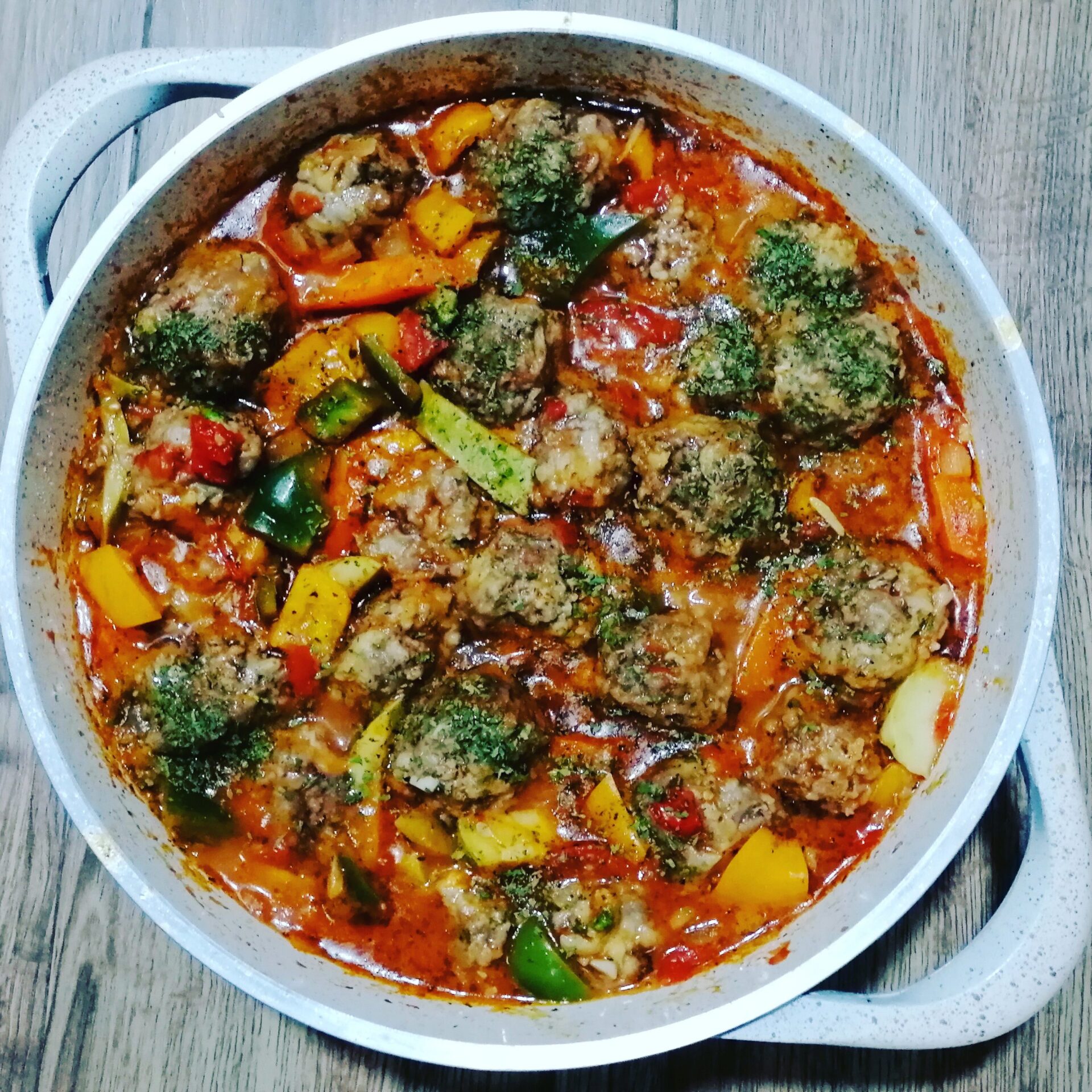
It was very rich and delicious. You must do it again before the end of Ramadan.
Where can I find Thareed in Riyadh?
Hi. I honestly am not so sure. Do you like to try the recipe here, though, and let us know how it turns out? Regards – Magida
This is a helpful recipe. Will try to cook the dish. I’ve lived in Jeddah, Saudi Arabia, for more than 29 years as a professor at King Abdulaziz University but didn’t discover the dish. I had such a busy teaching/research load. Now that I’m retired and back to the USA, I read about Saudi Arabian cuisine, feel genuinely interested in the dish, especially because it’s a Sunnah dish and a very ancient dish preserved in the worldwide Islamic culture.
Thank you.
Dr. Solaiman Ali
Bloomington, IL
Hi Dr. Soliman Ali. Very late response, please forgive me. Thanks for dropping by. Inshallah you enjoy the dish, please share your experience. BTW, I worked in KAUST during ts early stages. 🙂 Thanks and regards